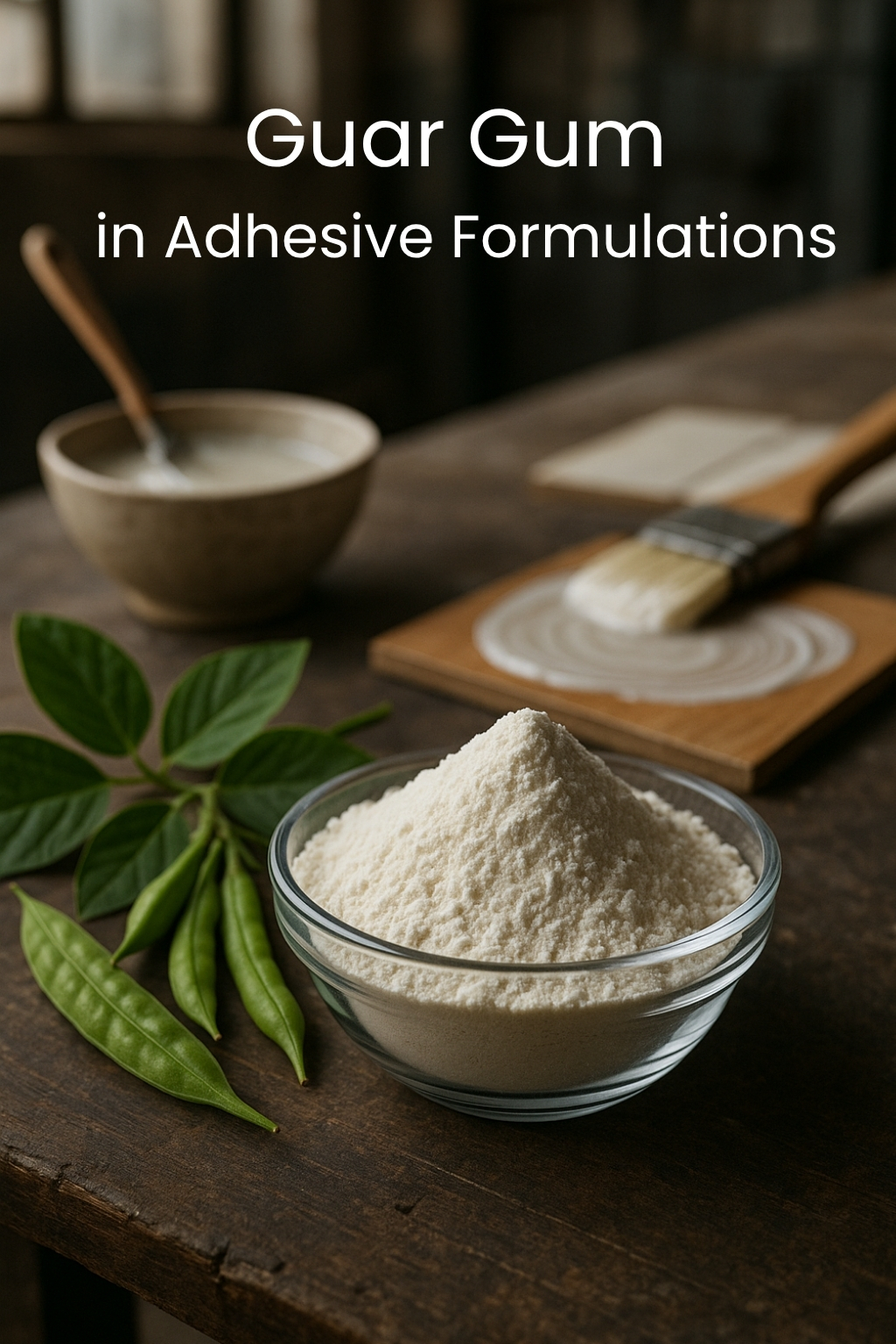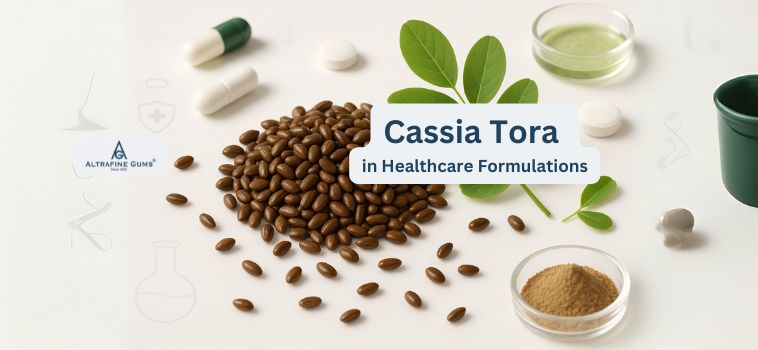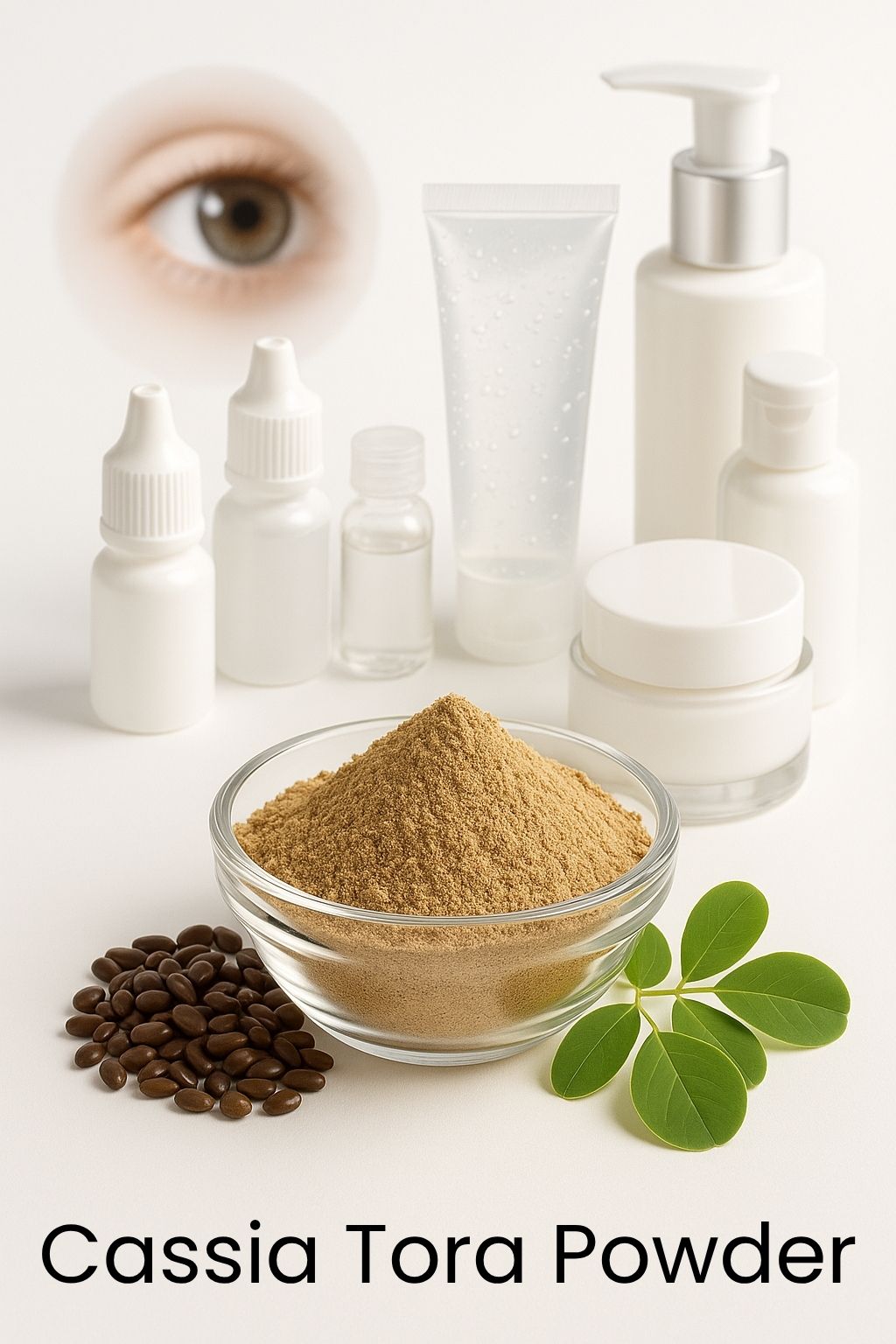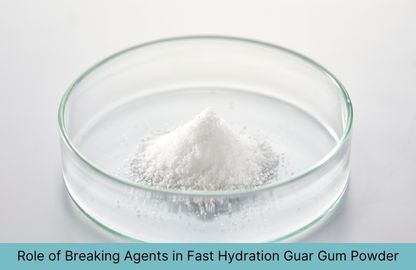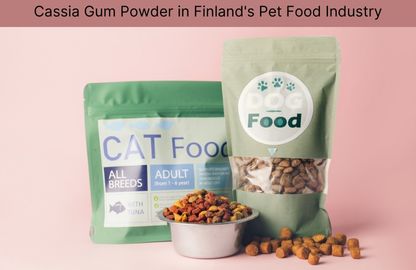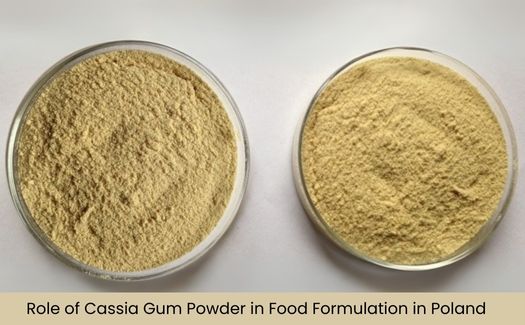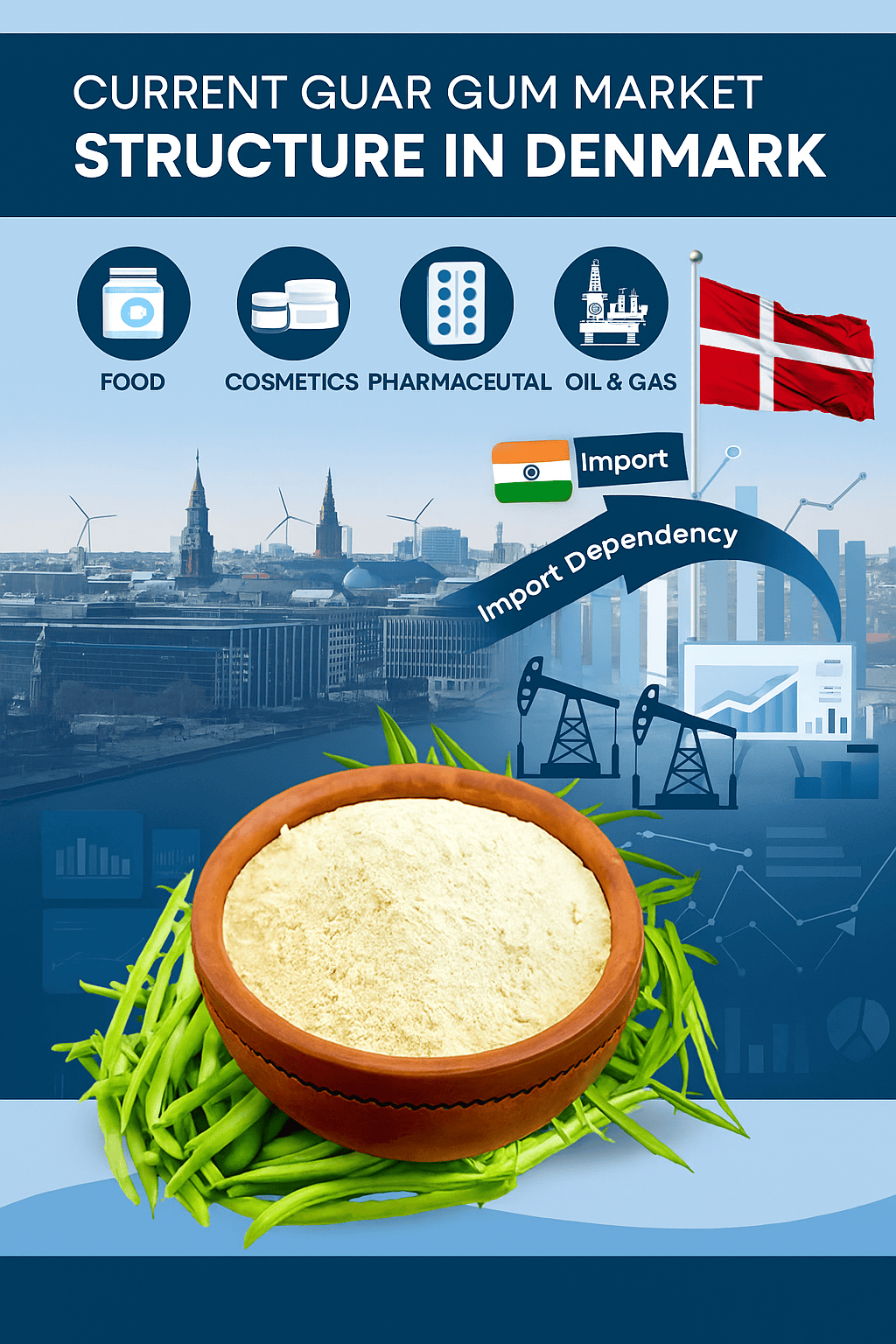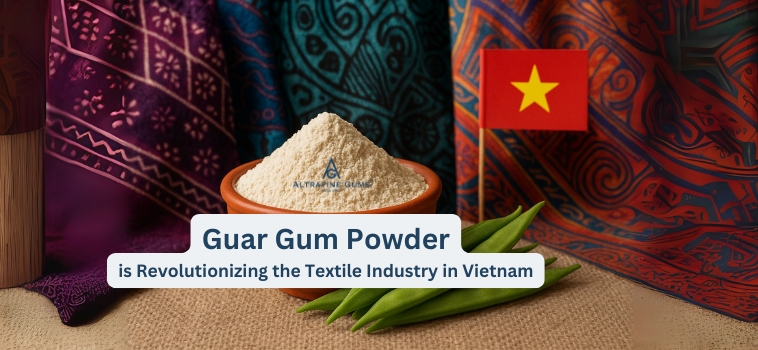Objective:
This article aims to explore the role of Cassia Gum in enhancing foam stability in beverages and confectionery. We will discuss its composition, functional properties, mechanism of foam stabilization, applications and its growing importance in the food industry, particularly for clean-label products and plant-based formulations. The article will provide insights into its usage, dosage recommendations and the market outlook for Cassia Gum as a stabilizer.
How Cassia Gum Improves Foam Stability in Beverages and Confectionery
What Is Driving the Rising Role of Natural Hydrocolloids in Food Formulation?
With increasing consumer awareness about health and sustainability, there has been a noticeable shift toward using natural stabilizers and clean-label ingredients in food and beverages. Consumers are increasingly seeking products that are free from artificial additives and preservatives, which has propelled the use of natural gums and hydrocolloids in food formulations. Cassia Gum, derived from the seeds of the Cassia tora plant, has emerged as a valuable natural stabilizer in both beverages and confectionery products. Its ability to function as a thickener and emulsifier has made it an essential ingredient in the formulation of dairy drinks, whipped toppings, carbonated beverages and aerated sweets.
As the food industry embraces clean-label trends, Cassia Gum Powder offers an ideal solution due to its natural origin and versatility, further promoting consumer confidence in food products that are both functional and wholesome.
What Are the Key Composition and Functional Properties of Cassia Gum?
Cassia Gum is primarily derived from the seeds of Cassia tora, which are rich in galactomannan, a type of polysaccharide. The molecular structure of Cassia Tora Gum allows it to absorb water and form a gel-like consistency. This property is critical in food applications where water-binding is necessary to maintain texture, stability and product integrity.
The main functional traits of cassia gum powder include its ability to thicken, bind water and enhance gel formation, especially when combined with other gums like carrageenan, xanthan or locust bean gum. These synergistic interactions improve the overall functionality of the gum, making it a valuable ingredient for achieving the desired consistency and stability in food products. The ability of Cassia Gum to retain moisture also helps extend the shelf life of food products.
Why Is Foam Stability Important in Beverages and Confectionery?
Foam stability plays a crucial role in the sensory and textural characteristics of many food and beverage products. In dairy drinks, whipped toppings, carbonated beverages and aerated sweets, foam provides a light, airy texture that is highly desirable. However, the maintenance of foam stability poses challenges, including issues such as foam collapse, syneresis (the separation of liquid from foam) and texture inconsistency over time.
The ability to maintain stable foam is essential for ensuring a desirable mouthfeel and appearance throughout the shelf life of the product. In beverages like instant cappuccinos, smoothies and flavored milk, foam stability is crucial for preserving the sensory experience that consumers expect. Similarly, in confectionery products like marshmallows, whipped fillings and mousse-based desserts, foam stability impacts the texture and quality of the finished product.
How Does Cassia Gum Enhance Foam Stability?
Cassia gum works by interacting with proteins and surfactants, which strengthens the air-liquid interface in foam systems. This interaction helps form viscoelastic films that coat the air bubbles, which in turn prevents bubble coalescence (the merging of bubbles) and slows down the process of drainage (the loss of liquid from the foam). The result is enhanced foam stability that lasts longer, even in the presence of mechanical stress or temperature changes.
When combined with other emulsifiers or hydrocolloids such as Cassia Gum can synergistically improve foam formation and stability. This synergy helps to optimize the overall texture and consistency of the foam, ensuring that it remains stable for extended periods and providing a smooth, uniform mouthfeel in both beverages and confectionery products.
What Are the Key Applications of Cassia Gum in Beverages and Confectionery?
In the beverage industry, Cassia Gum Powder finds application in a variety of products such as dairy drinks, instant cappuccino foams, flavored milk, smoothies and non-dairy emulsions. The gum’s ability to stabilize foam helps create a desirable texture in these beverages, enhancing the overall consumer experience.
In confectionery products, Cassia Tora Gum is used in items such as marshmallows, whipped fillings, aerated creams and mousse-based desserts. The gum helps to improve mouthfeel, ensure a uniform texture and increase shelf life by maintaining foam stability and preventing texture degradation over time. By incorporating Cassia Gum as a thickener, manufacturers can achieve consistent quality and extend the shelf life of their products without relying on artificial additives.
What Are the Dosage Recommendations and Formulation Insights for Cassia Gum?
The hydration temperature and pH compatibility are key considerations when incorporating Cassia Gum into formulations. For optimal performance, the gum should be hydrated in cool to room temperature water to avoid clumping. The pH of the final product also influences the gum’s effectiveness, with slightly acidic to neutral conditions being ideal for most applications.
In some cases, blending cassia gum with other hydrocolloids such as xanthan gum or guar gum can further enhance foam stability and texture. The synergy between these gums helps to improve the overall performance of the foam, ensuring that it maintains its stability for longer durations. Proper mixing, hydration and temperature control during processing are critical to achieving optimal results.
What Is the Market and Sustainability Outlook for Cassia Gum?
The demand for Cassia Gum is growing, particularly in the context of clean-label and plant-based product lines. As consumers continue to seek out natural ingredients with minimal processing, Cassia Gum Powder is well-positioned as a sustainable alternative to synthetic stabilizers. Its eco-friendly sourcing and biodegradable nature make it an attractive option for manufacturers aiming to create environmentally responsible products.
Additionally, Cassia Gum Price is often more competitive compared to other natural gums, offering a cost-effective solution for formulators. As the food industry moves towards more sustainable and plant-based products, Cassia Tora Gum is likely to see increased adoption in formulations that emphasize both functionality and environmental responsibility.
Conclusion
Cassia Gum offers a natural, effective solution for improving foam stability in beverages and confectionery. Its unique ability to form viscoelastic films, enhance air-liquid interfaces and synergize with other hydrocolloids makes it a valuable ingredient in food formulation. As demand for clean-label and sustainable products continues to rise, Cassia Gum Powder is set to play an increasingly significant role in creating high-quality, stable products for consumers seeking both functionality and environmental consciousness.
FAQs About Cassia Gum
What is Cassia Gum?
Cassia Gum is a natural hydrocolloid derived from the seeds of the Cassia tora plant, used as a stabilizer and thickener in food products.
How does Cassia Gum improve foam stability?
Cassia Gum strengthens the air-liquid interface in foam, preventing bubble coalescence and maintaining foam structure over time.
What are the applications of Cassia Gum in food?
Cassia Gum is used in beverages like dairy drinks and smoothies, as well as confectionery products such as marshmallows and mousse-based desserts.
What are the dosage recommendations for Cassia Gum?
Cassia Gum should be hydrated in cool to room temperature water, with slightly acidic to neutral pH conditions for optimal foam stability.
Why is Cassia Gum gaining popularity in food formulations?
Its natural origin, clean-label appeal and eco-friendly properties make Cassia Gum a preferred choice for sustainable and plant-based food products.

CEO, Altrafine Gums
With over Four decades of expertise in the natural gums and hydrocolloids industry, Ajit Patel leads Altrafine Gums, a globally recognized manufacturer and exporter of Guar Gum Powder, Cassia Tora Powder (Cassia Gum Powder) and other Hydrocolloids. Under his visionary leadership, the company has built a strong reputation for quality, innovation, and reliability across the food, feed, pet feed, pharmaceutical, mining, oil drilling and cosmetic sectors.
Altrafine Gums has been serving global industries for decades with a focus on sustainable sourcing, research-driven production, and stringent quality control. Its wide product portfolio includes Guar Gum Powder, Cassia Tora Powder (Cassia Gum Powder) and other plant-based hydrocolloids that serve as key functional ingredients in diverse applications.
Ajit Patel’s commitment to excellence ensures that every product from Altrafine meets international standards of performance and purity. He is passionate about advancing the global reach of Indian hydrocolloids, fostering customer trust, and promoting eco-friendly, science-backed solutions that enhance product formulation and performance worldwide.





